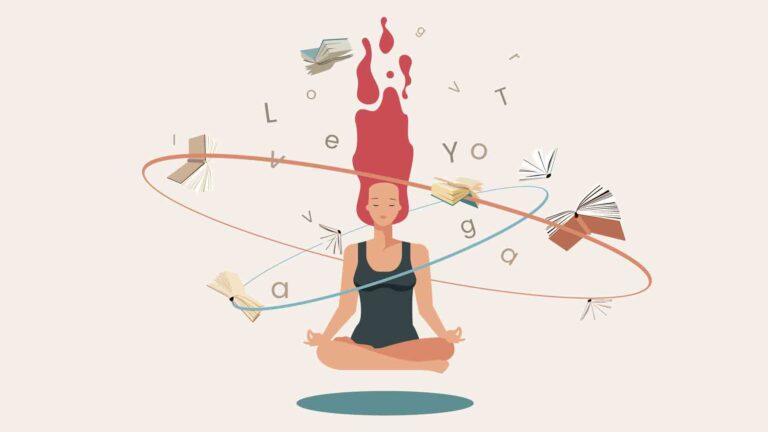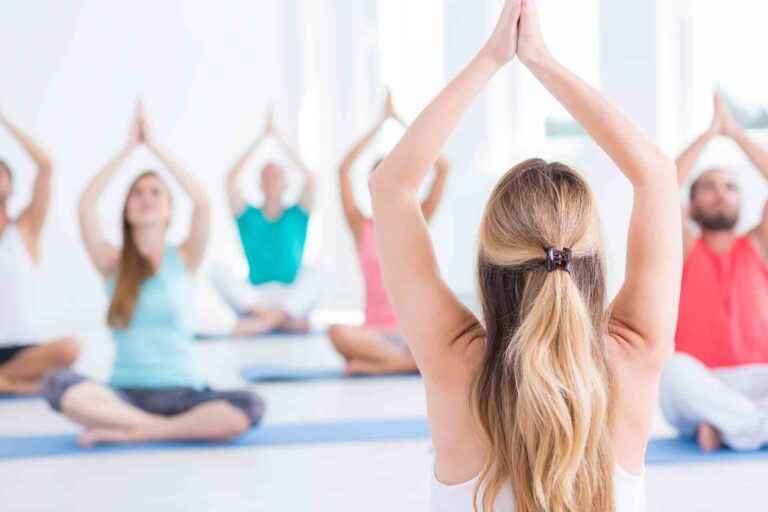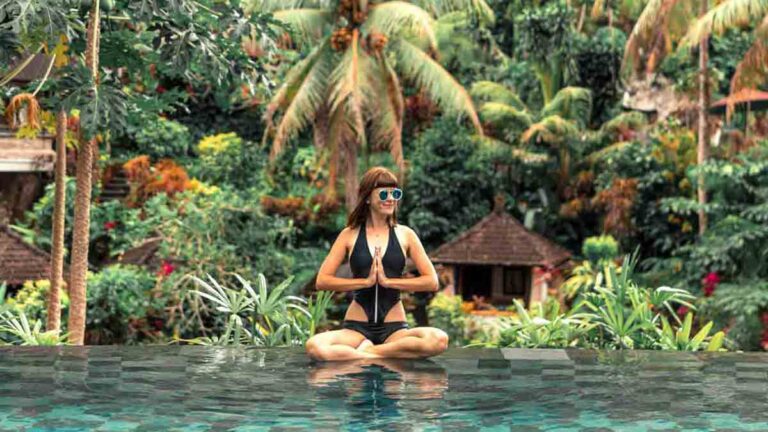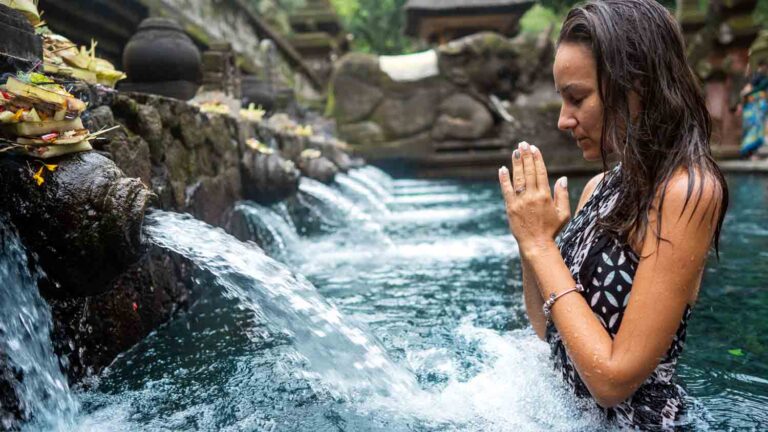Sanskrit Yoga Words & Phrases To Know Before Your First Retreat
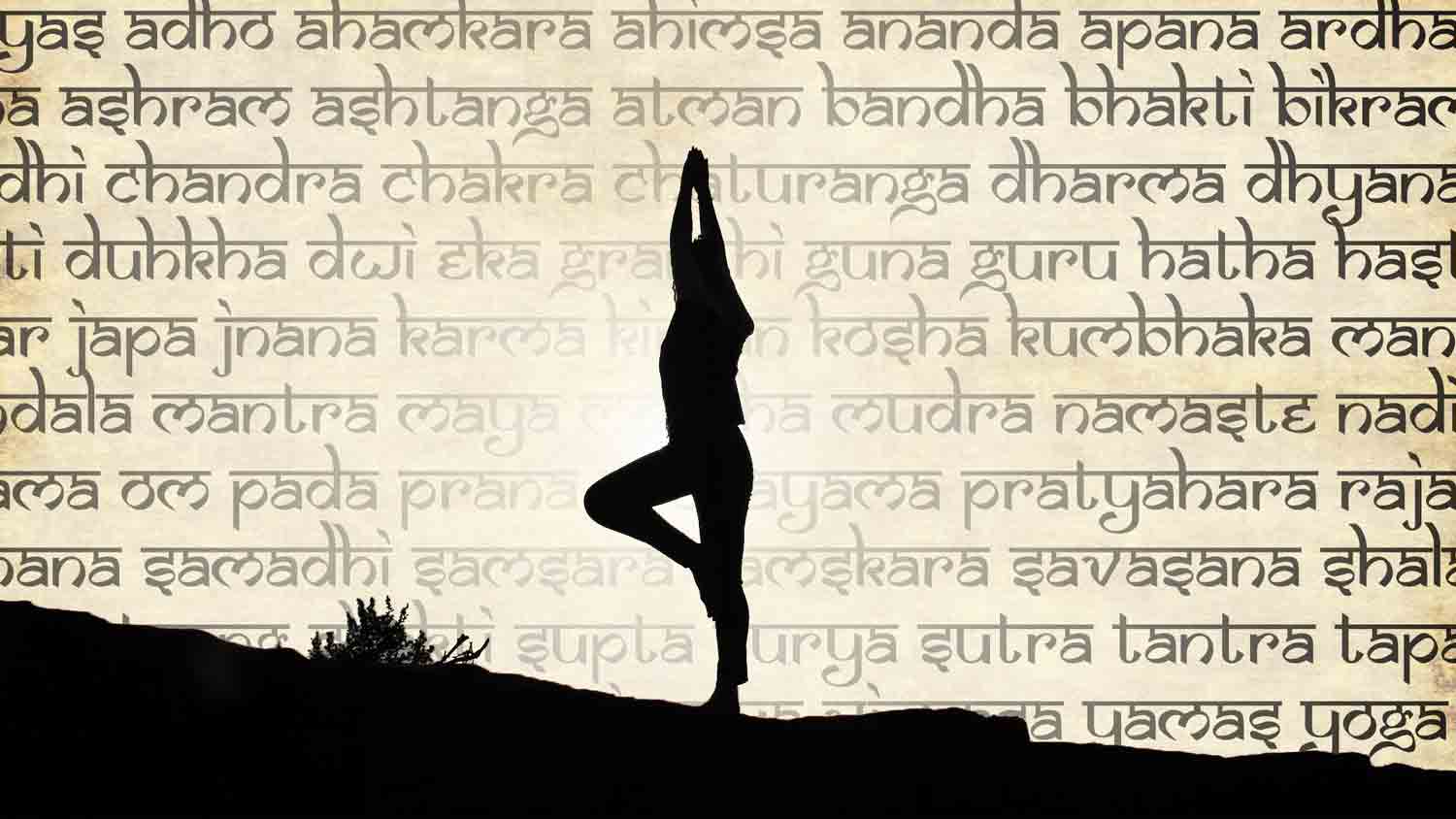
You can prepare for your first yoga retreat in many ways, from researching the location to increasing the regularity of your yoga practice. However, one less obvious yet essential way to ensure your first retreat goes as well as possible is to learn some common yoga terminology.
You’ve probably heard some Sanskrit words and phrases that originate from India in your yoga classes already. But perhaps you are unsure of what they mean. And, of course, you don’t want to look confused on your upcoming retreat.
Even if you’re not going on a yoga retreat in India, you’ll probably hear some of these Sanskrit words. But fear not, as today I’m sharing the most common yoga words and phrases and their meaning.
Pin this image!

10 Sanskrit Yoga Words & Phrases Every Yogi Should Know
Be sure to bookmark this page and revisit it before you head off for your yoga vacation.
Namaste
Chances are you have seen your yoga teacher put her palms together and bow her head as she says Namaste. This is a common way to start or end a yoga class, and when you understand the meaning behind the word, you see it is a lovely gesture.
Many beginner yogis think of Namaste as a way of saying thank you to their yoga instructor. However, it has a much deeper meaning than that.
Namaste translates to “bowing to you” or “I bow to you”. It is a sign of respect, gratitude, and admiration for another human being and an acknowledgement of the spiritual connection.
Asana
One of the most common yoga phrases used in modern-day yoga lessons that originate from Sanskrit is asana.
Asana literally translates to “seat” but refers to all yoga poses. Interestingly, seated yoga postures were the only poses practised in the ancient yoga tradition in India, hence the name.
However, although yoga has evolved into many different shapes and movements, asana is used to describe the entire physical practice of yoga and every pose.
Vinyasa
You may have seen the word Vinyasa on the timetable at your yoga studio. This is because it is used to describe a specific style of yoga. Vinyasa means “to place in a special way,” which refers to the smooth and dynamic transition between poses.
Vinyasa is about flowing with your breath and doesn’t only describe a style of yoga. For example, you may hear a yoga teacher say, “take a vinyasa”. In this sense, they mean a specific sequence of postures, typically performed between standing poses.
To take a vinyasa, you start from the downward-facing dog and roll forwards into a plank position before lowering halfway to the floor through “Chaturanga Dandasana.” You then push into the ground to come into the backbend upward-facing dog pose before lifting the hips and returning to the downward-facing dog.
Pranayama
The word pranayama refers to the breathing exercises you do in yoga. Prana means “life force energy,” and Yama means “control or mastery.” Pranayama can be a powerful practice to balance or boost energy and most yoga retreats will start classes with meditation and pranayama.
You may have already been taught some of these, such as Ujjayi breathing, which means “victorious breath.”
Ujjayi is a breathing technique you should use throughout an Ashtanga or Vinyasa yoga practice as it regulates your body temperature, prevents fatigue, and enhances focus.
It involves inhaling and exhaling through the nose, but on the exhale, you constrict the back of the throat to create an audible exhale (the sound of the ocean).
Other common pranayama exercises include yogic breath and Durgha pranayama which are foundation exercises to begin yogic or diaphragmatic breathing. Nadi Shodhana is a gentle alternate nostril practice that means ‘channel purifying breath’.
Kapalbhati (breath of fire) is a more advanced exercise that boosts energy and cleanses the nasal passageways and head. Check out this article about pranayama techniques if you want to start learning before your retreat.
Surya Namaskar
Another common work used in yoga vocabulary you should know before your first retreat is Surya Namaskar, the Sanskrit name of the commonly practised Sun Salutation.
This is a series of postures practised in many yoga styles, including Hatha, Vinyasa, and Ashtanga. The sequence is typically performed at the beginning of the class to warm the muscles up, and you repeat the series a few times.
There are different variations of Surya Namaskar. All are considered a way to salute the sun, as it is believed the sequence came from an ancient Hindu ritual performed at sunrise.

Chakra
The chakras are energy centres located in the subtle body. You cannot see or feel chakras, so learning about them can feel abstract to beginners. And while you may not hear them mentioned in a beginner-level drop-in class, it could be something you’ll dive into on a yoga retreat.
For reference, there are seven main chakras in the human body:
- Root chakra (Muladhara) – located at the base of the spine
- Sacral Chakra (Svadhisthana) – located an inch or so below the belly button
- Solar Plexus Chakra (Manipura) – located just above the belly button
- Heart Chakra (Anahata) – located in the centre of the chest
- Throat Chakra (Vishuddha) – located in the throat
- Third Eye Chakra (Ajna) – located in between the eyebrows
- Crown Chakra (Sahasrara) – located just above the top of the head
What’s fascinating about the chakras is that each one is responsible for specific functions in the body, mind, and emotions. In yoga, we seek to bring all chakras into balance to experience health and harmony.
Bandhas
Have you ever heard a yoga instructor say, “engage your bandhas” while holding a pose?
The Bandhas are energetic locks within the body. Engaging them helps to regulate the flow of prana (breath) through the body and direct it to certain areas, which enables you to go further in a pose.
There are three main bandhas that you should be aware of:
- Mula Bandha (root lock): Contract and lift the pelvic muscles.
- Uddiyana Bandha (abdominal lock) – On an exhale, suck your belly into your spine and hold.
- Jalandhara Bandha ( throat lock): Tuck the chin to the chest.
Dristhi
Drishti is another of the most crucial yoga terms to know as it helps you find better stability, balance and concentration in poses.
Drishti means your focal point, so when a teacher tells you to find your Drishti in Tree pose, find a spot directly in front of you that is not moving and keep your gaze fixed on it.
Note that every posture has a Drishti, which may not necessarily be directly in front of you. For example, in the downward dog, the Drishti is to the belly button, and in the upwards hands, it is to the sky.
Mantra
Mantra refers to a sacred word or phrase you chant as a way of connecting with the universe and calming your mind.
The most common mantra in yoga is OM, which is typically chanted one to three times to open or close the session. OM is the sound of the universe and is known to bring an immense feeling of peace and grounding to the body and mind.
Mudra
Mudra is a symbolic hand gesture performed while holding specific asanas. Mudras stimulate certain parts of the mind or body and carry powerful energetic qualities, such as emotional release.
The most common mudra in beginner yoga is Gyan mudra. Gyan is also known as the meditation mudra, performed while connecting to the breath in an easy seated pose. It involves touching the thumb to the index finger while extending the other three fingers.

Some Final Thoughts
While this is not an exhaustive list these are some of the most handy yoga words and phrases to help prepare you for an immersive yoga experience like a retreat. As yoga retreats offer you the chance to dive deeper into your yoga practice, don’t be afraid to ask your teacher to elaborate on any of these yoga phrases.
If you go on to do a yoga teacher training course expect to cover all these in depth – it’s a great way to learn more about this complex ancient practice, even if you don’t plan to become a yoga instructor.
If you want to prepare or just learn more about the rich history of yoga and yoga philosophy here’s some of the best books for yoga teacher training that will give you a solid foundation of yoga knowledge and help you feel confident and prepared on your retreat. A yoga vacation is also a great change to relax with a good book – here’s 25 books that are ideal for reading on a yoga retreat.
* This post may contain affiliate links. When you make a purchase through links on our site we may make a small commission, at no additional cost to you. We only recommend products that we love and genuinely use ourselves. All prices stated are correct on the date of publishing, but can be subject to change.
© loveyogalovetravel.com 2022-2024. Unauthorized use and/or duplication of this material without express and written permission from this site’s author and/or owner is strictly prohibited. Excerpts and links may be used, provided that full and clear credit is given to loveyogalovetravel.com with appropriate and specific direction to the original content.
